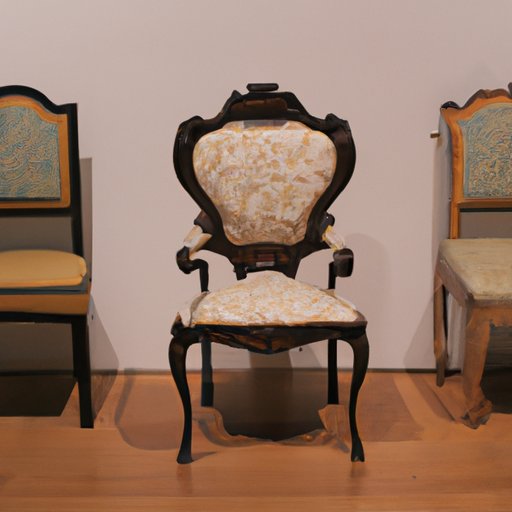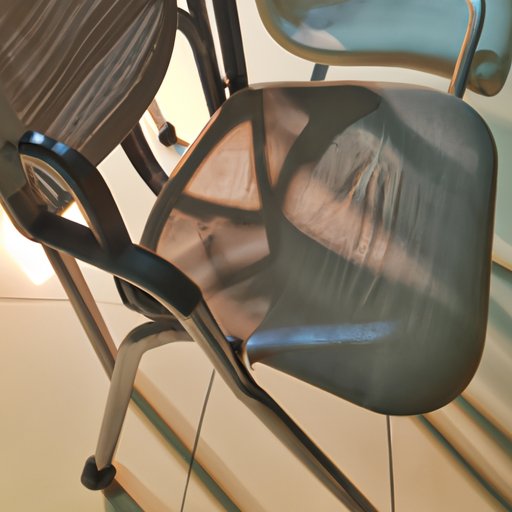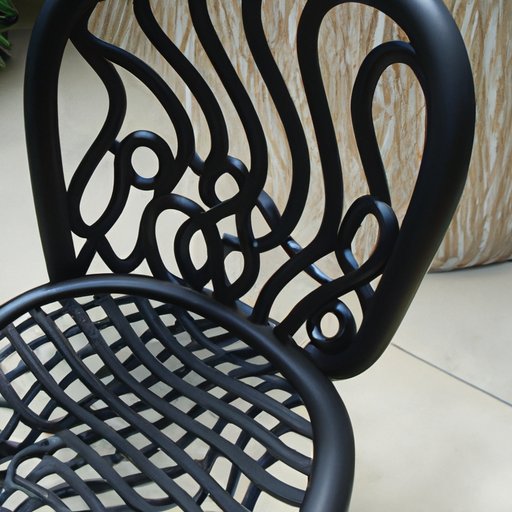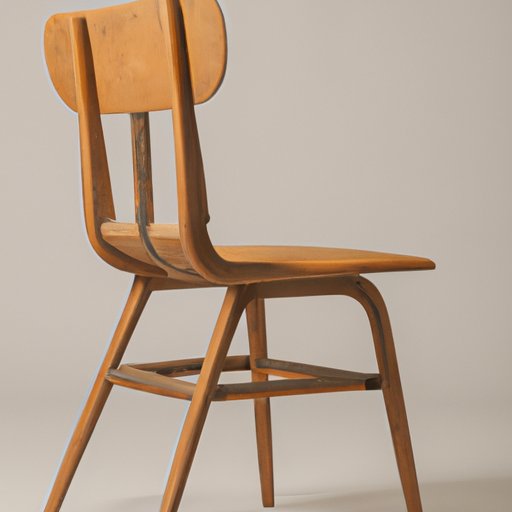Introduction
A chair is a piece of furniture designed to support the body for various activities such as sitting, resting, or sleeping. Chairs come in a variety of shapes, sizes, materials, and designs, and can be used both indoors and outdoors. This article will explore the historical journey of the chair, from its inception to its modern form, as well as the designers and inventors behind the chair, the different types of chairs throughout history, and the impact of chair invention on everyday life.

Historical Journey of the Chair: From Ancient Times to Today
The earliest known chairs were found in ancient Egypt, dating back to around 3100 B.C.E. These chairs were made of wood and were often elaborately carved. They were also decorated with ivory and gold, and were used by royalty and the upper classes. Other ancient civilizations, including the Greeks and Romans, also developed their own versions of chairs, which were typically made of stone or wood and featured intricate designs.
During the Middle Ages, chairs became more widely available to the public, although they were still only used by the wealthy classes. Chair designs during this period were often ornate and decorated with carvings and tapestries. During the Renaissance period, chairs began to be made with a greater emphasis on comfort and ergonomics. Designs during this period were often curved and featured armrests, making them more comfortable to sit in.
The 19th and 20th centuries saw a dramatic shift in chair design. With the development of new materials such as steel, plastics, and synthetic fabrics, chairs became lighter, more durable, and more affordable. Chairs became more accessible to the general public, and the range of styles and designs increased significantly.
An Exploration of the Designers and Inventors Behind the Chair
Throughout history, there have been many inventive minds behind the design of the chair. During the early periods of chair design, most chairs were crafted by skilled artisans who had an eye for detail and craftsmanship. Some of the most notable chair designers and inventors from this period include Thomas Chippendale, George Hepplewhite, and William Morris.
In the 20th century, designers such as Charles and Ray Eames, Hans Wegner, and Marcel Breuer revolutionized chair design with their innovative ideas and forward-thinking approaches. These designers created pieces that pushed the boundaries of traditional chair design and introduced new materials and techniques into the mix. Their iconic designs remain popular today.
A Look at How Chairs Have Evolved Over Time
Chairs have evolved significantly over time, not just in terms of materials and design but also in terms of cultural influence. As cultures and societies have changed, so too has the design of chairs. For example, during the 19th century, chairs began to be designed with a focus on comfort and ergonomics, while during the 20th century, chairs began to reflect the changing tastes and preferences of society, with bolder colors, shapes, and materials being used.
In addition, technological advancements have also played a role in the evolution of chairs. For instance, the introduction of Viscoelastic foam in the 1970s allowed for chairs to be designed with improved comfort and ergonomics, while the development of 3D printing technology has enabled the creation of complex and intricate chair designs that would have been impossible to achieve without the help of technology.

The Impact of Chair Invention on Everyday Life
Chairs have had a major impact on everyday life, particularly in terms of comfort and ergonomics. The introduction of ergonomic chairs has allowed people to sit in a more comfortable position for extended periods of time, reducing the risk of developing aches and pains. Furthermore, chairs that are designed with ease of use in mind can make everyday tasks easier and more efficient, such as getting in and out of a chair or maneuvering around a room.
The Different Types of Chairs Throughout History
Throughout history, there have been a variety of different types of chairs. Ancient chairs were typically made of wood and often intricately carved or decorated. Medieval chairs were usually made of wood and featured elaborate carvings and tapestries. Renaissance chairs were designed with a focus on comfort and ergonomics, with curved shapes and armrests. Modern chairs are typically made from a variety of materials, such as wood, metal, plastic, and synthetic fabrics, and feature a wide range of designs.

Exploring Chair Designs from Around the World
The design of chairs varies greatly depending on the culture and region it is from. European chairs typically feature simple, elegant designs with clean lines and minimal decorations. Asian chairs are often intricately carved and decorated, while African chairs tend to be more rustic and functional. American chairs are typically more modern and feature a range of materials and styles.
Conclusion
The chair is one of the most important inventions in human history. It has gone through a long and varied journey, from its humble origins to its modern forms. Throughout this journey, it has been shaped by various cultures and inventors, and has had a significant impact on our everyday lives. From ancient times to today, the design and evolution of the chair has been fascinating to observe.
(Note: Is this article not meeting your expectations? Do you have knowledge or insights to share? Unlock new opportunities and expand your reach by joining our authors team. Click Registration to join us and share your expertise with our readers.)
